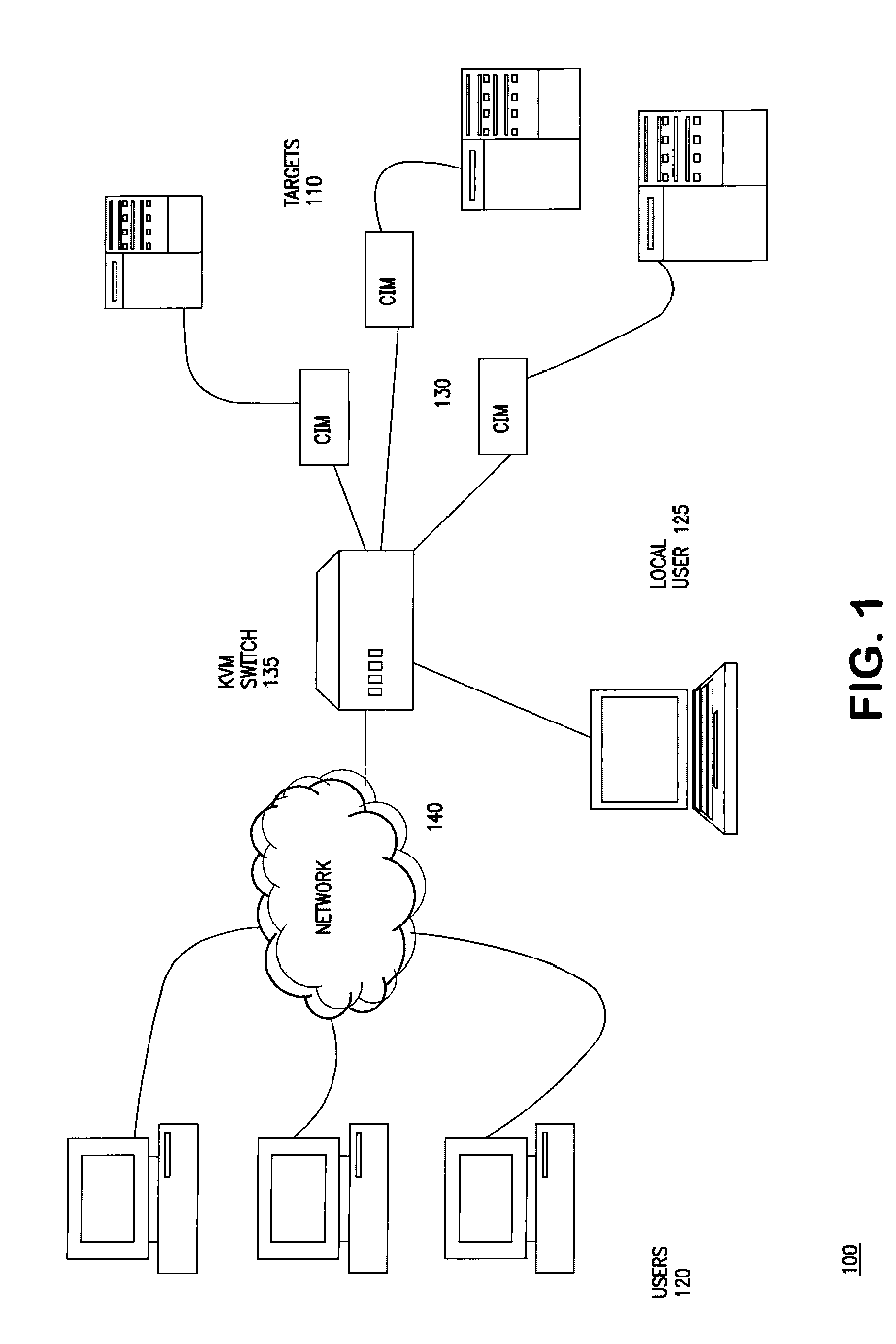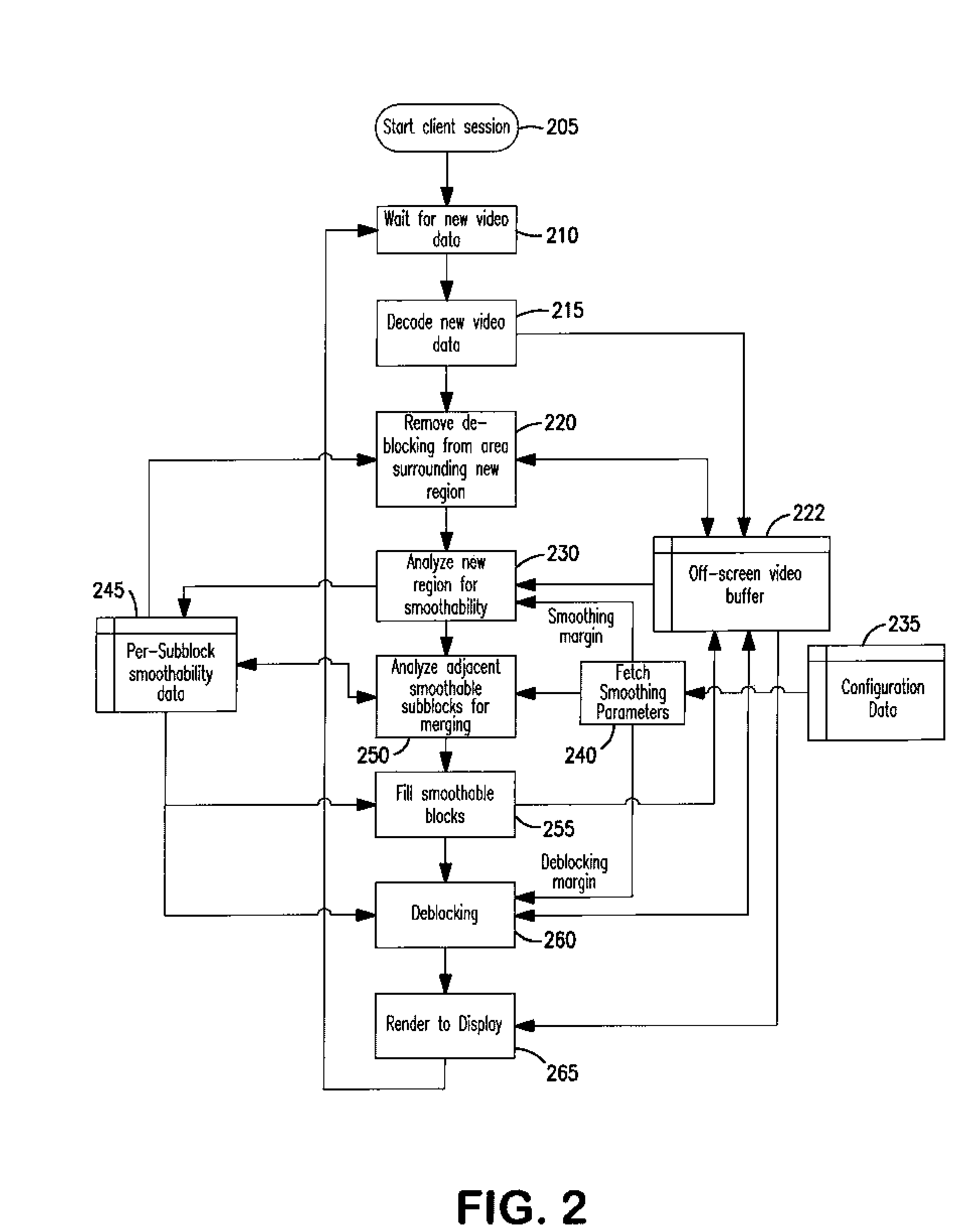Methods for adaptive video quality enhancement
a video quality enhancement and adaptive technology, applied in the field of video data, can solve the problems of additional bandwidth requirements, unusable video quality in a remote access scenario, and prominently visible down-sampling noise with existing kvm, and achieve fast and adaptive video enhancement, satisfactory user experience, and high frame rate
- Summary
- Abstract
- Description
- Claims
- Application Information
AI Technical Summary
Benefits of technology
Problems solved by technology
Method used
Image
Examples
Embodiment Construction
I. Exemplary Architecture
[0016]Referring to FIG. 1, there is shown an exemplary remote management and access system 100 in which the innovative method can be implemented to improve the rendered video at the user or client side of a network 140. Although the example discussed below is described with respect to a remote management session in system 100, the method is applicable to any video networked system.
[0017]System 100 comprises a plurality of remote devices or targets 110 that can be accessed by remote users 120 and local users 125 through switch 135. Remote devices 110 can be any of a number of devices including servers, computers and other construct. Remote devices 110 are connected to switch 135 via computer interface modules 130, which act to condition keyboard, video and mouse signals for the remote connection. Remote users 120 are connected through a network 140 to switch 135 and local user 125 is connected to switch 135. The connections can be made using any of a number o...
PUM
 Login to View More
Login to View More Abstract
Description
Claims
Application Information
 Login to View More
Login to View More - R&D
- Intellectual Property
- Life Sciences
- Materials
- Tech Scout
- Unparalleled Data Quality
- Higher Quality Content
- 60% Fewer Hallucinations
Browse by: Latest US Patents, China's latest patents, Technical Efficacy Thesaurus, Application Domain, Technology Topic, Popular Technical Reports.
© 2025 PatSnap. All rights reserved.Legal|Privacy policy|Modern Slavery Act Transparency Statement|Sitemap|About US| Contact US: help@patsnap.com



